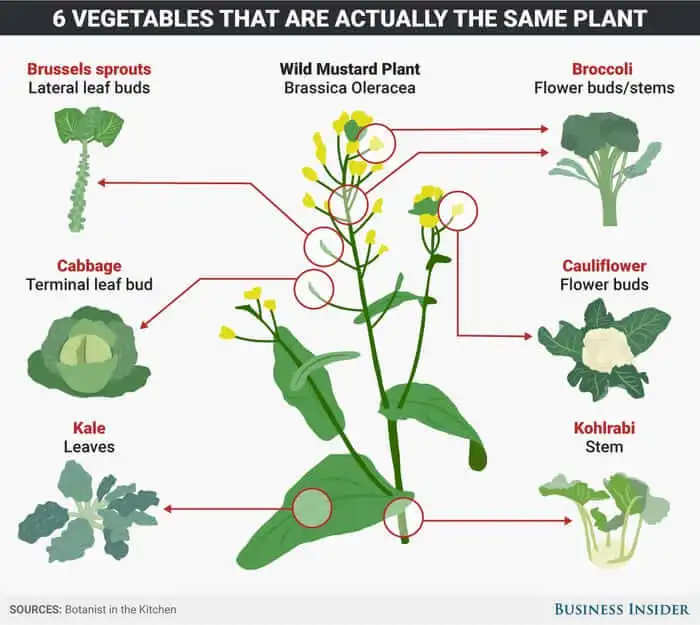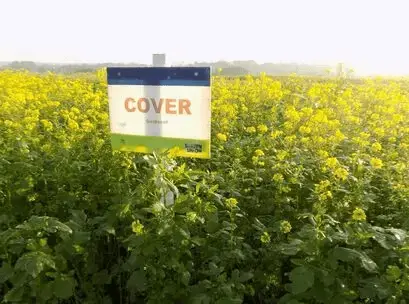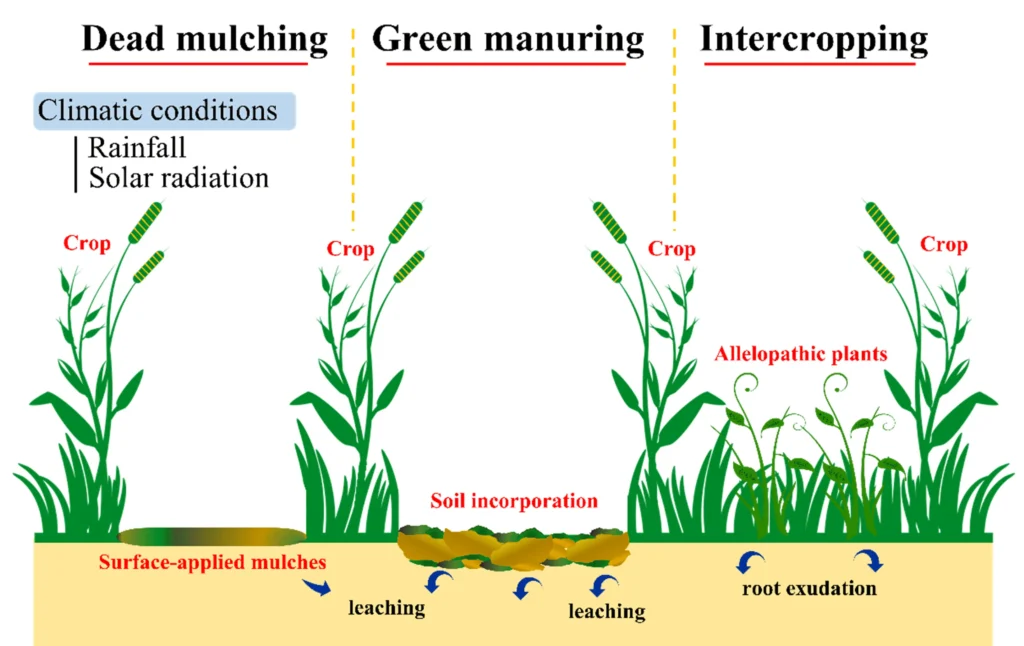Have you ever heard of Brassica Allelopathy? Before explaining that let me tell you why you should read this. After the Green Revolution in India, our food production increased rapidly with the use of synthetic fertilizers, pesticides, irrigation technology, chemical herbicides, and improved crop varieties. Unfortunately, these methods resulted in habitat destruction, land degradation and environmental depletion, as they remain available in the environment for a longer period leading to soil and environmental pollution.

And we reached a stage where farmers are forced to use this for better yield. Is there any alternative for this? A sustainable model? Yes, we do have but considering the cost-effectiveness, most of our farmers won’t adopt those. Here we are introducing a cost-effective environment-friendly sustainable solution for this challenge.
What is this Allelopathy? In which plant species can we see that?
Brassica allelopathy refers to the phenomenon where plants belonging to the Brassicaceae family (such as broccoli, cabbage, cauliflower, kale, mustard, radish, and canola) release chemical compounds that can affect the growth, development, and survival of other plants. These allelochemicals can be released from various parts of the plant, including roots, stems, leaves, flowers, and seeds, and can travel through the air, soil, and water.
In which plants do these allelochemicals produce? All the brassica species I can say, but some species showed a promising allelopathic effect.

Finally, allelopathy is a process that involves either direct or indirect effects, and either beneficial or adverse effects of plants on another plant through the environmental impact of chemical releases.
Plants like Rapeseed/ Canola (Brassica napus), Indian mustard (B. Juncea) and Ethiopian mustard (Brassica Carinata) are highly allelopathic in the Brassica family. Where do they release these chemicals? Let’s have a look at that.
These plants produce endogenously allelochemicals (Glucosinolates, Phenolic compounds, Allyl isothiocyanates and Brassinosteroids) which help in the control of target plant growth and development. From where these chemicals are released? It may be roots, stems, flowers, pollen grains, seeds or leaves.
But, how does allelopathy help in sustainable crop production?
How Brassica Allelopathy Can Save Your Crops
If we look into the common problems of farmers in any crop production are weeds, nematodes, fungus, and abiotic stress. These problems can be tackled efficiently by this brassica allelopathy. Still, HOW?

Weed Management by Allelopathy
Allelopathy tackles problems like the resistance of herbicides over weeds, environmental pollution and the importance towards organic agriculture, which have emphasized the position of non-conventional methods of weed control.
4 Techniques that can be used to make use of crops from the Allelopathy
1. Try Cover Crops
Allelopathic crops along with weed management shields from erosion of soil and snow trapping. Crops help in nitrogen fixation and enhancement of soil fertility and structure. Discharge of allelochemicals over root exudates and leaf shedding by rain will help to decay the whole weed seed bank. And herbicide-resistant weeds can be controlled by these crops. White mustard as the cover crop will be effective against Chenopodium album and Amaranthus blitoides (weeds).

2. Crop Rotation by allelopathic crops
When we use allelopathic crops in rotation helps to suppress the weeds and reduce the weed infestation. By decomposing crop residues and addition of rapeseed as a crop rotation helps to reduce 40 % weed density and also weed pressure.

3. Mulch and Residue Incorporation
When we use allelopathic residues as mulch, they release allelochemicals in the rhizosphere to control weeds. Mustard crops when used as mulch known to exhibit a strong allelopathic effect against A. retroflexus, Capsella bursapastoris, Setaria viridis (green foxtail)

4 . Plant Water Extracts :
Concentrated form of plant parts dissolved in the water. While the whole plant and root extractions of black mustard suppress weeds in alfalfa, lentil and onion. Plant water extracts of white mustard and seed extract of Indian mustard significantly lower the biomass of redroot pigweed, Chenopodium album.
How to make this Plant Water Extracts (PWE)?

Pest Management
Allelopathic water extractions of Rapeseed (Brassica napus) at 8-16% is effective in controlling cabbage aphids. Planting mustard plants between cabbage plants will help in trapping DBM pests.
What are the Advantages of Allelopathy?
If you are searching for a substitute for synthetic chemicals then allelopathy will be the best choice. It is less environmentally hazardous and eco-friendly too. If you ask about cost, it is cost-effective also. Finally, the most important is no residual effect on soil and crops.
Last But Not Least: The Allelopathic Effect is a Double-Edged Sword
Brassica crops can serve as an alternative to chemical control by using their allelopathic effect to manage weeds and pests. This can play a role in integrated management and also contribute to creating sustainable agriculture.
Don’t forget that Brassica allelopathy is a complex phenomenon with the potential to both benefit and harm agriculture. Before application, it’s good to consult with an agronomist and understand the mechanisms and effects of allelopathy, so that you can develop strategies to utilise its benefits while minimizing its negative impacts.
Get a free consultation from AgriApp Agronomy Services. Call now at +91 9108047688